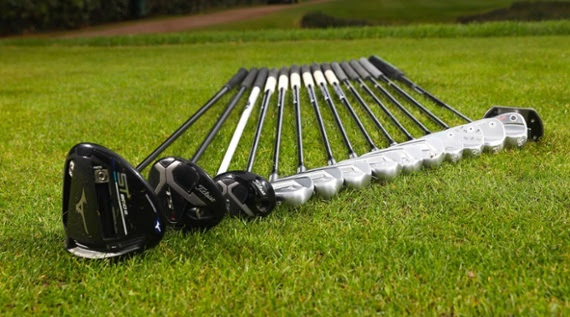 |
|
What Are The Degree Loft Of Golf Clubs?
Read our guide to find out the lofts of different golf clubs...
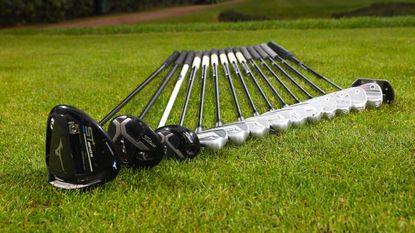

What Are The Degree Loft Of Golf Clubs?
The degree of loft on golf clubs helps differentiate them from one another as the loft has a strong influence on the flight and distance of shots. A lower loft can potentially hit the ball further whilst a higher loft launches the ball up into the air with more spin. In this video, we explain what degree lofts to expect from a set of golf clubs.
As Neil explains in this video, there really are no set lofts of golf clubs in the modern game, with manufacturers bringing out numerous different ranges with different lofts to deliver a variety of performance characteristics.
Many high launching, most forgiving irons tend to come with stronger lofts which may sound counterintuitive. This is because, as the set is designed to launch the ball high, usually through a change in CG location, manufacturers can strengthen the lofts to add more distance whilst still delivering the sort of flight window golfers would expect to see.
Loosely speaking, stronger ball-strikers tend to like weaker, more traditional lofts in their irons because this provides better distance control and shot-shaping ability. These golfers are also not necessarily looking for more distance within their iron line-up. Tiger Woods for example has one of the "weakest" loft set-ups in the professional game as he prioritises spin and control over distance.
Driver Degree Loft
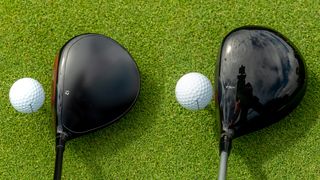
The average loft of most of the best golf drivers is generally somewhere around the 10 degree mark although there is a wide spectrum even at the very top of the game.
As our Bryson DeChambeau What's in The Bag? article reveals his driver loft is currently 7.5 degrees although he has been known to experiment as low as 5 degrees in tour events. Most better players will tend to sit somewhere between 8-10.5 degrees of loft in their driver, any higher than this and powerful players will tend to produce excessive spin.
For beginner players or higher handicaps, many of the best drivers for slow swing speeds can have lofts as high as 12-13 degrees to help get the ball up in the air with the right amount of spin. Many drivers on the market also allow you to change the loft up to around 4 degrees to tune in the optimal flight for your game.
Get the Golf Monthly Newsletter
Subscribe to the Golf Monthly newsletter to stay up to date with all the latest tour news, equipment news, reviews, head-to-heads and buyer’s guides from our team of experienced experts.
Fairway Wood Loft

Most golfers will carry a 3-wood and the traditional 3 wood loft is around 15 degrees.
Some players will carry a strong 3 wood at around 13-13.5 degrees of loft if it is a club that they want to go as far as possible or like using off the tee. Clubs like the TaylorMade BRNR Mini Driver sit somewhere between driver and fairway wood and have lofts between 11.5 and 13.5 degrees.
Most equipment manufacturers also offer high launch 3 woods up to 16.5 degrees. As with driver, many of the best fairway woods come with adjustable hosels and allow you to change loft to your preference. So you might just have a 3 wood that is waiting to be turned into a 2 wood or even a 4 wood...
Traditionally a 4 wood would be 17 degrees and a 2 wood would be 12 degrees, although these clubs are lesser-seen these days. A 5 wood is usually 18-19 degrees, whilst a 7 wood will be around 21 degrees.
E-Learning Tutorial - Shoot Lower Scores!
Are you interested in making lasting improvements to your golf game? Shoot Lower Scores is an online course from Golf Monthly designed to help you find power in your swing and hole more putts as well as how to avoid falling foul of the more challenging rules of golf. Whether you want to brush up your knowledge or learn something new; this tutorial is perfect.
Hybrid Loft
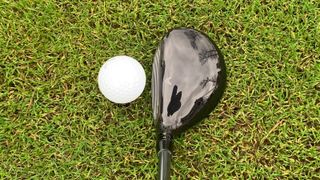
Hybrids come in a wide range of different lofts
There really is no set hybrid loft, with hybrids coming in anywhere from 16 degrees all the way through the bag with some beginners and higher handicaps using hybrid irons.
Most tour players with some of the best golf hybrids in the bag will have them between 18-22 degrees to replace their 2, 3 and 4 irons or simply as another option in certain conditions. They're easier to hit and will generally launch higher and come down softer on the greens.
In our experience a 3 hybrid is usually around 19˚ and a 4 hybrid is around 22˚. Whilst these lofts might seem a bit low, the construction of the heads is designed to get the ball up in the air easily so, again, stronger lofts offer the potential for more distance.
Due to the head shape, it is easier for manufacturers to locate the CG lower in the clubhead facilitating a much higher launch than an iron of the same loft.
Iron Lofts
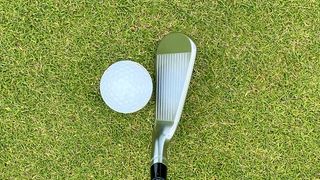
As we have already mentioned, lofts can vary greatly between iron sets. To give you an idea, the 7-iron in the Mizuno MP-20 model (a traditional, blade-like iron) is 34˚. This is relatively weak in the modern game, and as such these irons are designed more with distance control rather than pure distance, in mind. At the other end of the spectrum the Mizuno JPX912 Hot Metal (more of a distance iron) features a 7-iron with just 29˚.
Below, we have listed the lofts featured in the latest PING G set of irons. We've chosen this model as it is a popular iron that suits a wide range of players from low handicappers to game improvers. Here are the lofts of the irons in that set.
4-iron - 20.5 degrees
5-iron - 23.5 degrees
6-iron - 26.5 degrees
7-iron - 30 degrees
8-iron - 34.5 degrees
9-iron - 39.5 degrees
PW-iron - 44.5 degrees
Wedge lofts
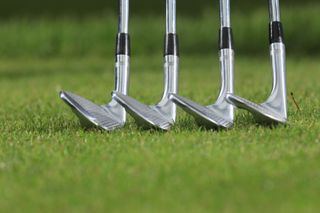
A pitching wedge loft in the modern game is generally between 44-47 degrees, with most golfers using one that comes with their iron set. However, better players often prefer to use a specialist wedge instead of the one that comes with the set as many of the best golf wedges can help with control and spin.
A gap wedge literally fills the gap between pitching and sand wedges and is usually somewhere between 48 and 53 degrees. A sand wedge loft tends to be somewhere between 54 and 57 degrees.
The loft of a lob wedge is traditionally 60 degrees, however some players will carry 58 degree wedges, which can also be classed as a lob wedge. Players like Phil Mickelson have lob wedges up to 64 degrees.
Putter Loft
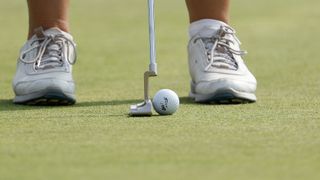
Putters also require some degree of loft to help with ball roll
Most of the best putters will come as standard with around 3.5-4.5 degrees. Some golfers may have less or more loft but that usually comes from a putter fitting where the club is tailored to the stroke.
A lot of people assume that putters don't have any loft but in order to get the ball rolling on top of the grass quicker, some loft is needed.
If you have a downward attack angle you may want more loft and if you hit the ball on the up then you may want less loft. Your choice may also be determined by the greens you most regularly play on - slow greens may require a little more loft than faster greens.

Location: Walton Heath
Jo teaches at Walton Heath and is a PGA Advanced Professional having graduated in 2011. She has helped hundreds of women and girls get into the game and she is a strong believer that, whatever your ability, everyone can get plenty out of the game. Jo is currently working towards a Doctorate in Sport and Exercise Science.
Teaching philosophy:
I like to keep things simple and try to articulate things in a way that is easy for the student to understand. I need to understand the technicalities of what is creating their ball flight, but I need to be able to communicate that to the student in a way that they can utilise.
A typical lesson:
My lessons begin with a lot of questioning, I want to understand what the person wants out of their lesson. I want to understand as much about their game and what they are struggling with. Once I’ve seen their flight and motion, I will often utilise video and TrackMan data to further understand/reinforce what I’m seeing. I always want my students to understand what we are changing and why. I then take the player through what we want to change, and how best to practise. I close my lessons by checking for understanding and asking the player to tell me what they going to work on.
Most common impact:
Angle of attack is often a common impact fault I see, with players either being too steep or too shallow. Most often this is caused by a lack of rotation or a poor concept where a player is trying to scoop or chop down on the ball. I try to correct the fault by demonstrating the concept before getting the player to make small, controlled swings to get a feel for the new movement. With some players I try to find a visualisation or an external focus of attention which helps them make the desired movement without overthinking.
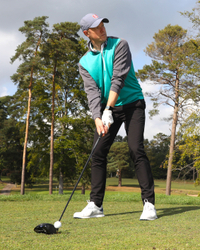
No comments:
Post a Comment